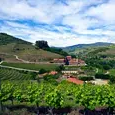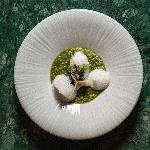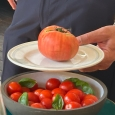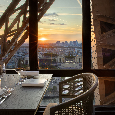
Today, Hartwell House is a luxury hotel that does the past with a regal service and tasteful immaculate decor that didn’t always exist in the 19th century. Not even for kings. Not even when three of them resided in this quintessential English country house in 90 acres of rolling parkland. From 1809 this was home to Gustavus – deposed King of Sweden and two future kings of France: Louis XVlll and Charles X. Managed by Historic House Hotels – but with ownership gifted to the National Trust to enhance Hartwell’s chances of long-term preservation – Hartwell House is probably looking better now than it ever did.

Standing on the bridge over the ornamental lake, looking towards an elegantly proportioned Jacobean facade, it is all too easy to imagine a period drama scene – all poodle hair, crinoline dresses and white breeches – of Louis’ civilised court. But to begin with, that bridge wasn’t there during Louis’ exile from Napoleon Bonaparte’s France – 1809 to 1814 to be history lesson precise – it only appeared at Hartwell after, mid 19th century- it had been deemed too narrow for the Thames increasingly busybcrossing at Kew.

In reality, Louis with his sometime louche court of 140 stateless souls were bedraggled refugees after fearful flight through Italy, Poland, Prussia and Russia. What wouldn’t they have given for the instant hot water and cosy central heating that are nowadays taken for granted at Hartwell?
"Standing on the bridge over the ornamental lake, looking towards an elegantly proportioned Jacobean facade, it is all too easy to imagine a period drama scene - all poodle hair, crinoline dresses and white breeches - of Louis’ civilised court."

In the main house, The Royal rooms are Versailles grand, Versailles large, Versailles tall. Each individually decorated as a paean of antiques, portraits, Gainsborough style landscapes, tapestries to bygone eras: a time machine into a past world of interior design

But always remember the wise words with which L.P. Hartley opened the Go Between novel: “The past is another country, they do things differently there.” Louis subdivided the rooms to cram in his court. Whilst up on the roof, courtiers who had fallen on hard times kept livestock in cages and grew crops in pots.

Oyster Louis as he was nicknamed after his diet – obese and suffering from both gout and gangrene – was hardly the perfect tenant even though he was generously allowed to lease the property for just £500 per annum. Leaving for France and the restoration of the Bourbon monastery in 1814, when his gout finally permitted, Louis certainly did not leave Hartwell as he had found it. Recreating that Restoration moment in Hartwell’s library, where Louis signed the document, makes for an esoteric social media post. Equally, you can imagine that you are signing the charter establishing the British Meteorological Society. Their inaugural meeting took place in 1850 in the very same library.

Hartwell House simply drips with history. It goes without saying that the site was mentioned in the 1086 Domesday Book. William the Conqueror gave the existing house to his son. Though the current house was not built until the beginning of the 17th century by the Hampden family. One of their number, MP John, stirred up Parliament and the people over King Charles l’s unreasonable way of levying taxes. After the ensuing Civil War, Charles lost his kingdom and his head.

The historical name-dropping continues. When the Lee family owned Hartwell House, Robert E Lee went on to become leader of the Confederate Army whilst Christopher and his fangs starred in Dracula films. Then Ernest Cook, grandson to Thomas Cook, made Hartwell his home. Rather more sedately, Hartwell House has been a Hotel for the last 30 years.

Though It is wrong to get too tied up with any one episode of Hartwell’s sweeping history. Appropriately, a grand staircase from recent renovation has carved balusters from through the ages, ranging from grotesque medieval gargoyles to one modelled on Sir Winston Churchill.

A 19th century diarist visiting Louis at Hartwell was disappointed by the bland food. Today’s visitors are far more impressed by the menu of the 2 AA Rosette restaurant. Although Louis would recognise many of the items on the Bill of Fare menu such as beef, brill, chicken, duck, quail and venison, there’s a quality of sourcing, a delicacy of presentation that would have been unfamiliar to the barrel-shaped future King of France.

Many visitors just drop by for afternoon tea. Sat amongst ornate cornice work, sweeping landscapes and austere formal portraits it is a chance to indulge in an immaculately presented slice of history. To be perfectly honest, Hartwell House’s extraordinary history makes the fictional Downton Abbey look a tad nouveau riche.
















